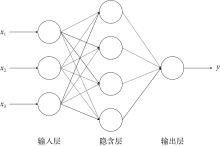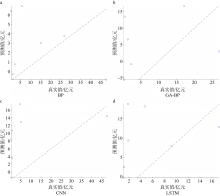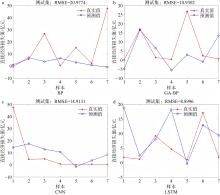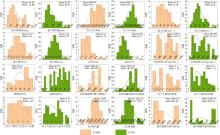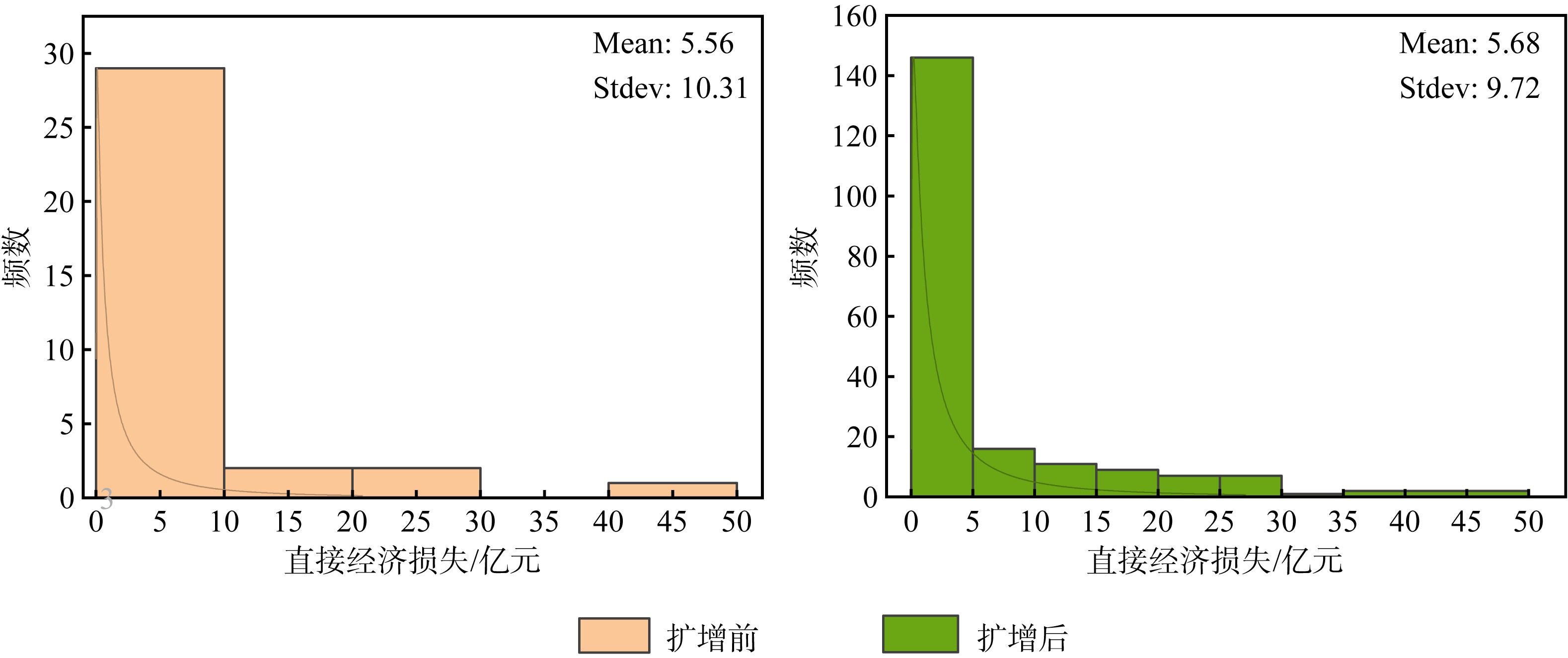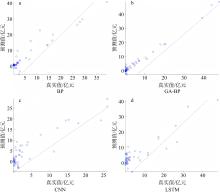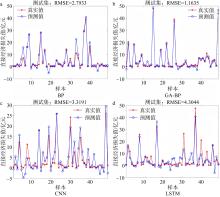| [1] |
丁宏飞, 李演洪, 刘博, 等, 2016. 基于BP神经网络与SVM的快速路行程时间组合预测研究[J]. 计算机应用研究, 33(10): 2929-2932, 2936.
|
|
DING HONGFEI, LI YANHONG, LIU BO, et al, 2016. Expressway’s travel time prediction based on combined BP neural network and support vector machine approach[J]. Application Research of Computers, 33(10): 2929-2932, 2936 (in Chinese with English abstract).
|
| [2] |
冯倩, 刘强, 2017. 基于SVM-BP神经网络的风暴潮灾害损失预评估[J]. 海洋环境科学, 36(4): 615-621.
|
|
FENG QIAN, LIU QIANG, 2017. Pre-assessment for the loss caused by storm surge based on the SVM-BP neural network[J]. Marine Environmental Science, 36(4): 615-621 (in Chinese with English abstract).
|
| [3] |
韩鹏, 郭桂祯, 李鑫磊, 等, 2023. 基于地理探测器的福建省台风灾情影响因素分析[J]. 遥感技术与应用, 38(2): 487-495.
doi: 10.11873/j.issn.1004-0323.2023.2.0487
|
|
HAN PENG, GUO GUIZHEN, LI XINLEI, et al, 2023. Research on influencing factors of typhoon disasters in Fujian Province based on geodetector[J]. Remote Sensing Technology and Application, 38(2): 487-495 (in Chinese with English abstract).
|
| [4] |
韩鹏, 郭桂祯, 孙宁, 等, 2022. 广东省台风灾害时空格局及影响因素研究[J]. 灾害学, 37(3): 112-117.
|
|
HAN PENG, GUO GUIZHEN, SUN NING, et al, 2022. Spatiotemporal patterns and influencing factors of typhoon disasters in Guangdong Province, China[J]. Journal of Catastrophology, 37(3): 112-117 (in Chinese with English abstract).
|
| [5] |
李艳兰, 金龙, 史旭明, 等, 2021. 基于遗传—神经网络方法的广西台风灾害评估模型研究[J]. 气象与环境学报, 37(3): 139-144.
|
|
LI YANLAN, JIN LONG, SHI XUMING, et al, 2021. Study on assessment model of typhoon disaster in Guangxi based on genetic-neural network method[J]. Journal of Meteorology and Environment, 37(3): 139-144 (in Chinese with English abstract).
|
| [6] |
李志娟, 2016. 台风灾害损失预测方法研究[D]. 广州: 华南理工大学.
|
|
LI ZHIJUAN, 2016. The research of typhoon disaster loss prediction[D]. Guangzhou: South China University of Technology (in Chinese with English abstract).
|
| [7] |
林沛延, 林陪晖, 王俊, 等, 2023. 基于机器学习方法的浙江省台风灾害风险评估和动态风险预报[J]. 自然灾害学报, 32(4): 13-24.
|
|
LIN PEIYAN, LIN PEIHUI, WANG JUN, et al, 2023. Typhoon disaster risk assessment and dynamic risk forecasts in Zhejiang Province based on machine learning methods[J]. Journal of Natural Disasters, 32(4): 13-24 (in Chinese with English abstract).
|
| [8] |
刘玉函, 唐晓春, 宋丽莉, 2003. 广东台风灾情评估探讨[J]. 热带地理, 23(2): 119-122.
|
|
LIU YUHAN, TANG XIAOCHUN, SONG LILI, 2003. A discussion about the typhoon disaster evaluation of Guangdong[J]. Tropical Geography, 23(2): 119-122 (in Chinese with English abstract).
|
| [9] |
毛嘉铭, 刘光宇, 罗凯元, 2024. 结合数据增强及组合算法的短期光伏功率预测[J]. 电力系统及其自动化学报, 36(8): 133-141.
|
|
MAO JIAMING, LIU GUANGYU, LUO KAIYUAN, 2024. Short-term photovoltaic power prediction using data augmentation and combined algorithms[J]. Proceedings of the CSU-EPSA, 36(8): 133-141 (in Chinese with English abstract).
|
| [10] |
牛海燕, 刘敏, 陆敏, 等, 2011. 中国沿海地区台风灾害损失评估研究[J]. 灾害学, 26(3): 61-64.
|
|
NIU HAIYAN, LIU MIN, LU MIN, et al, 2011. Losses assessment of typhoon disaster in China coastal areas[J]. Journal of Catastrophology, 26(3): 61-64 (in Chinese with English abstract).
|
| [11] |
邱军, 孙力勇, 樊庆东, 2023. 一种基于三次样条插值的风电场出力预测评估方法[J]. 电气开关, 61(3): 16-18, 23.
|
|
QIU JUN, SUN LIYONG, FAN QINGDONG, 2023. A method for predicting and evaluating wind farm output based on cubic spline interpolation[J]. Electric Switchgear, 61(3): 16-18, 23 (in Chinese with English abstract).
|
| [12] |
汪路, 卢莹, 赵海坤, 2023. 台风灾害时空特征分析与评估模型构建[J]. 灾害学, 38(4): 187-194.
|
|
WANG LU, LU YING, ZHAO HAIKUN, 2023. Analysis of temporal and spatial characteristics of typhoon disasters and construction of evaluation model[J]. Journal of Catastrophology, 38(4): 187-194 (in Chinese with English abstract).
|
| [13] |
王阳, 陈薇伊, 马军山, 2022. 基于卷积神经网络的乳腺癌良恶性诊断[J]. 软件工程, 25(1): 6-9.
|
|
WANG YANG, CHEN WEIYI, MA JUNSHAN, 2022. Diagnosis of benign and malignant breast cancer based on convolutional neural network[J]. Software Engineering, 25(1): 6-9 (in Chinese with English abstract).
|
| [14] |
温姗姗, 翟建青, THOMAS Fischer, 等, 2017. 1984—2014年影响中国热带气旋的经济损失标准化及其变化特征[J]. 热带气象学报, 33(4): 478-487.
|
|
WEN SHANSHAN, ZHAI JIANQING, FISCHER T, et al, 2017. Variation of normalized economic losses from influential tropical cyclones in China for 1984—2014[J]. Journal of Tropical Meteorology, 33(4): 478-487 (in Chinese with English abstract).
|
| [15] |
徐金鹏, 郭新峰, 王瑞波, 等, 2023. 基于GAN数据增强的软件缺陷预测聚合模型[J]. 计算机科学, 50(12): 24-31.
doi: 10.11896/jsjkx.221100171
|
|
XU JINPENG, GUO XINFENG, WANG RUIBO, et al, 2023. Aggregation model for software defect prediction based on data enhancement by GAN[J]. Computer Science, 50(12): 24-31 (in Chinese with English abstract).
doi: 10.11896/jsjkx.221100171
|
| [16] |
杨帆, 夏鸿崚, 2024. 基于数据集扩充的即时软件缺陷预测方法[J]. 南通大学学报(自然科学版), 23(1): 58-65.
|
|
YANG FAN, XIA HONGLING, 2024. A just-in-time software defect prediction method based on data augmentation[J]. Journal of Nantong University (Natural Science Edition), 23(1): 58-65 (in Chinese with English abstract).
|
| [17] |
张恺, 杨隆浩, 高建清, 等, 2024. 基于累积置信规则库推理的台风灾害直接经济损失预测[J]. 灾害学, 39(1): 64-68, 74.
|
|
ZHANG KAI, YANG LONGHAO, GAO JIANQING, et al, 2024. Typhoon disaster direct economic losses prediction based on cumulative belief rule-based system[J]. Journal of Catastrophology, 39(1): 64-68, 74 (in Chinese).
|
| [18] |
赵飞, 廖永丰, 张妮娜, 等, 2011. 登陆中国台风灾害损失预评估模型研究[J]. 灾害学, 26(2): 81-85.
|
|
ZHAO FEI, LIAO YONGFENG, ZHANG NINA, et al, 2011. A pre-evaluation model for typhoon disasters in China[J]. Journal of Catastrophology, 26(2): 81-85 (in Chinese with English abstract).
|
| [19] |
GUO TENGJIAO, LI GUOSHENG, 2020. Study on methods to identify the impact factors of economic losses due to typhoon storm surge based on confirmatory factor analysis[J]. Natural Hazards, 100(2): 515-534.
|
| [20] |
LI JIACHUN, NIE BINGCHUAN, 2017. Storm surge prediction: present status and future challenges[J]. Procedia IUTAM, 25: 3-9.
|
| [21] |
RAJASEKARAN S, GAYATHRI S, LEE T L, 2008. Support vector regression methodology for storm surge predictions[J]. Ocean Engineering, 35(16): 1578-1587.
|
| [22] |
SUN HAI, WANG JIN, YE WENTAO, 2021. A data augmentation-based evaluation system for regional direct economic losses of storm surge disasters[J]. International Journal of Environmental Research and Public Health, 18(6): 2918.
|
| [23] |
UDDIN M J, LI YUBIN, SATTAR M A, et al, 2022. An improved cluster-wise typhoon rainfall forecasting model based on machine learning and deep learning models over the Northwestern Pacific Ocean[J]. Journal of Geophysical Research: Atmospheres, 127(14): e2022JD036603.
|
| [24] |
WANG SI, MU LIN, QI MENGNAN, et al, 2021. Quantitative risk assessment of storm surge using GIS techniques and open data: A case study of Daya Bay Zone, China[J]. Journal of Environmental Management, 289: 112514.
|
 ), XU Guilin2, MO Zhiming3(
), XU Guilin2, MO Zhiming3( )
)




